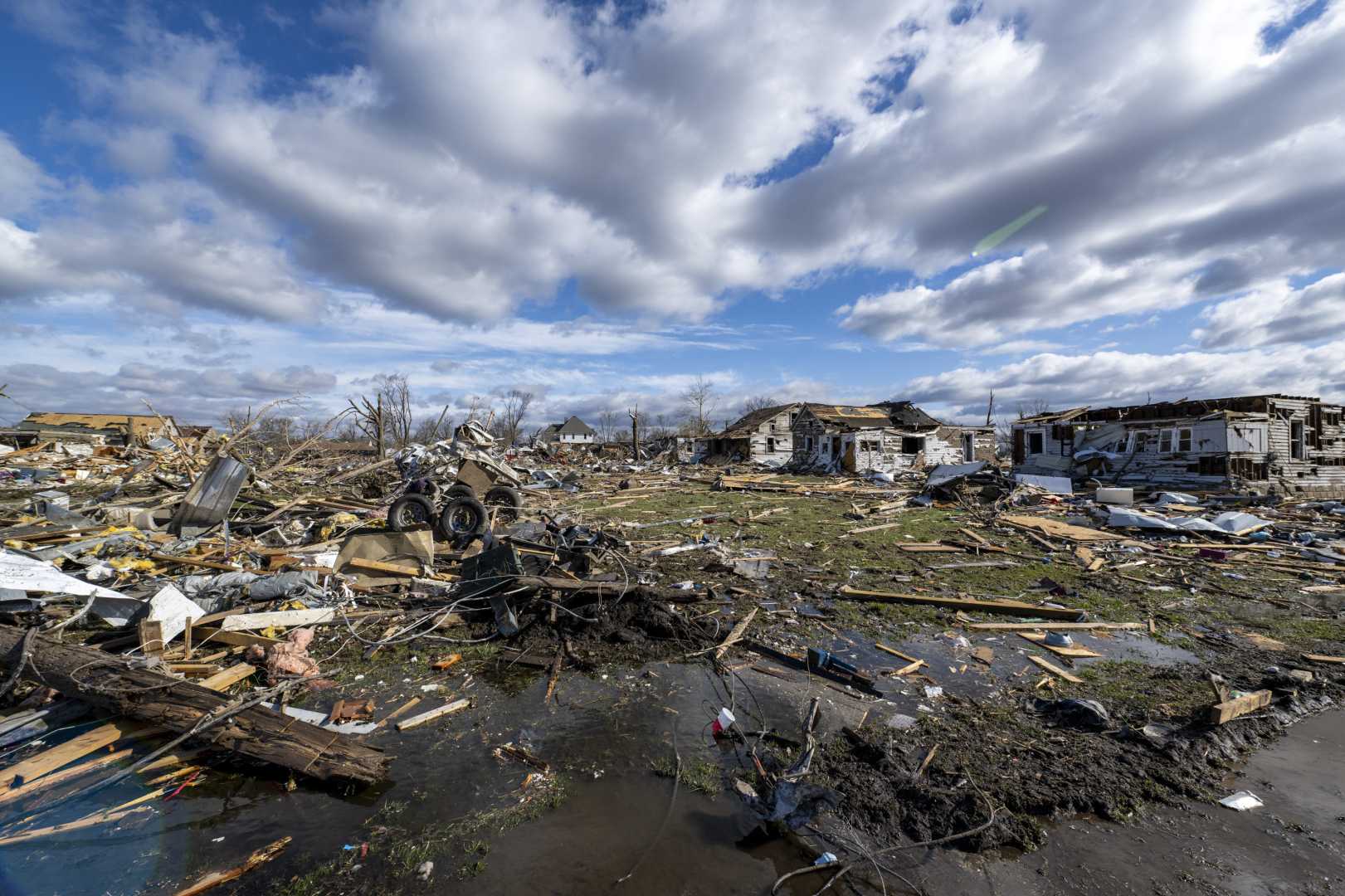News
Tornadoes Strike Southern States, Causing Fatalities and Widespread Damage

SPRINGFIELD, Tenn. — A series of destructive tornadoes ripped through Tennessee and other southern states late Sunday night, resulting in at least four confirmed deaths and extensive property damage. The severe storms, part of a broader weather system affecting multiple states including Oklahoma, Indiana, and Kentucky, have left hundreds of thousands without power.
The storm system was particularly intense in Kalamazoo County, Michigan, where high winds led to the tragic death of three individuals when a tree fell onto their vehicle. The county’s sheriff’s office reported that three others in the car sustained injuries ranging from stable to critical condition.
In Indiana, two fatalities were reported: one victim in Elkhart, where an Amish buggy was overturned, and another in Valparaiso due to severe crosswinds overturning a semi-truck. A man and woman were also trapped in a camping trailer in Oklahoma, where a tree fell on them, resulting in the man’s death from injuries.
According to electrical grid reports, over 400,000 homes and businesses across Michigan, Wisconsin, Indiana, Ohio, and Kentucky experienced power outages as heavy winds and fallen trees disrupted service. Many residents are seeking generators and alternative power sources. “We just passed a veterinary clinic. The entire front corner of the building was taken out by a tree,” shared Jesika Fox of Alpena, Michigan.
Travel disruptions emerged as major airlines began waiving change fees for passengers in affected regions. Travelers are advised to be aware of evolving weather conditions impacting flight routes in locations such as Chicago and Harlingen, Texas.
In Grand Valley State University, located in Grand Rapids, students and staff received a tornado warning which was lifted after about an hour. Emergency room physician Dr. Chris Davlantes provided a critical safety reminder, stating, “You definitely can lower your risk of these severe injuries by wearing a helmet.” He noted that head injuries are the leading cause of death from tornado-related incidents.
As weather conditions progressed into the Southeast, predictions of wind damage, hail, and additional tornadoes were on the horizon. Statistics show that the uptick in severe weather typically coincides with the arrival of spring, as cold air from the north collides with warmer, moist air from the Gulf of Mexico. “The ongoing tornado threat is standard for spring, especially as we creep closer to April,” explained meteorologist Tonks.
A rapid assessment of damage revealed that between March 30 and April 1, three tornadoes, classified as EF-1, caused structural damage across Indiana and Michigan. The storms left a trail of havoc, with roofs torn off buildings, trees uprooted, and barns flattened.
As authorities continue to assess damage and restore power, residents are urged to remain attentive to weather warnings and take necessary precautions. The National Weather Service advises that a tornado watch or severe thunderstorm watch signifies a potential threat, whereas a warning demands immediate action.












